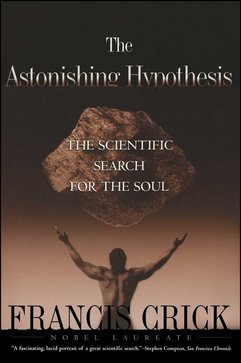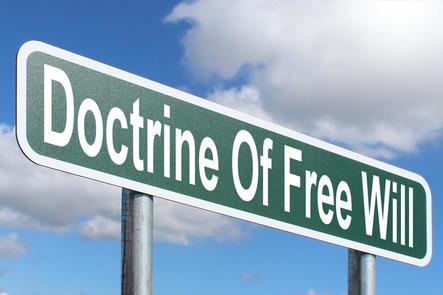 In his excellent 1994 book, The Astonishing Hypothesis, the late Nobel Prize winning scientist, Francis Crick (co-discovered of the structure of DNA with James Watson), put forward a hypothesis that boggles the mind. He wrote: “You, your joys and your sorrows, your memories and your ambitions, your sense of personal identity and free will, are in fact no more than the behavior of a vast assembly of nerve cells and their associated molecules.” He claimed that this hypothesis is astonishing because it is alien to the ideas of most people. This is presumably because, when it comes to our mind, we believe that there is something special about it. Clearly the mind is more than the product of the activity of billions of cells, no? Exalted emotions such as love and compassion and empathy or belief in the divinity or free will cannot just be a byproduct of chemical reactions and electrical impulses, right? But why would that be the case? Consider an organ like the intestine. It’s made up of billions of cells that cooperate to produce digestion. Most people will agree with the notion that the intestine produces digestion. So, if we can accept that the cells that make up the intestine produce digestion, why can’t we accept that the cells that make up the brain produce the mind? Let’s just touch on something simple, but that nevertheless goes to the very core of our notions of free will and consciousness. Consider an action such as performing the spontaneous motor task of moving a finger to push a button. In our minds we would expect that this and other such actions entail the following sequence of events in the order specified below: 1) We become aware (conscious) that we want to perform the action. 2) We perform the action. But what goes on in our brains even before we become aware that we want to perform the action? Many people would guess: nothing. Whatever brain activity occurs associated with the action must logically occur after we become aware that we are going to perform the action. After all, how could there possibly be nerve activity associated with an action that we are not even yet aware that we want to perform? Warning! Warning! - Insert blaring alarms and rotating red lights here - Fasten your existential seat belts because this ride is about to get bumpy! In 1983 a team of researchers led by Dr. Benjamin Libet carried out a now famous experiment to evaluate this question. The researchers recorded the electrical activity in the brains of test subjects which were asked to perform a motor task in a spontaneous fashion, and they also asked the subjects to record the time at which they became aware that they wanted to perform the task. The surprising result of the experiment was that, while the awareness of wanting to perform the task preceded the actual task as expected, the electrical cerebral activity associated with the motor task performed by the subjects preceded by several hundred milliseconds the reported awareness of wanting to perform the task! This amazing experimental result has been replicated by other researchers employing different methodologies. One study employing magnetic resonance to image brain activity stablished not only that the brain activity associated with the task is detected in some brain centers up to 7 seconds before the subject becomes aware of wanting to perform the action, but also that decisions based on choosing between 2 tasks could be predicted from the brain imaging information with an accuracy significantly above chance (60%). Delving even deeper into the brain, another group of researchers recorded electrical activity from hundreds of single neurons in the brains of several subjects performing tasks and found that these neurons changed their firing rate and were recruited to participate in generating actions more than one second before the subjects reported deciding to perform the action. The researchers could predict with 80% accuracy the impending decision to perform a task, and they concluded that volition emerges only after the firing rate of the assembly of neurons crosses a threshold.  The interpretations of these types of experimental results have triggered a debate that is still ongoing. The most unsettling interpretation is that there is no free will (i.e. your brain decides what you are going to do before you even become aware you want to do it). However, there are many critics that claim that there are technical flaws in the experiments, that the data is being overinterpreted, that the electrical activity detected is merely preparative with no significant information about the task, or that it is a stretch to extrapolate from a simple motor task to other decisions we make that are orders of magnitude more complex. In any case the question of whether free will exists is in my opinion irrelevant because our society cannot function under the premise that it doesn’t. What interests me from the point of view of the astounding hypothesis, is the possibility that the awareness of wanting to perform an action before we perform it is merely an illusion created by the brain. This notion is not farfetched. As I explained in an earlier post, the brain creates internal illusions for us that we employ to interact with reality. Colors are not “real”, what is real is the wavelength of the light that hits our eyes. What we perceive as “color” is merely an internal representation of an outside reality (wavelength). The same goes for the rest of our senses. As long as there is a correspondence between reality and what is perceived, what is perceived does not have to be a true (veridical) representation of said reality. Consider your computer screen. It allows you to create files, edit them, move them around, save them or delete them. However, the true physical (veridical) representation of what goes on in the computer hard drive when you work with files is nowhere near what you see on your screen. This is so much so, that some IT professionals refer to the computer screen as the “user illusion”. So, much in the same way that the brain creates useful illusions like colors that allow us to interact with the reality that light has wavelengths, or the computer geeks create user illusions (file icons) that allow us to interact with the hard drive, could it be that the awareness of wanting to perform actions, in other words, becoming conscious of wanting to do something, is just merely an illusion that the brain creates for the mind to operate efficiently? We are still in the infancy of attempts to answer these questions, but what is undeniable is that the evidence indicates that there is substantial brain activity taking place before we perform actions that we are not even yet aware we wish to perform, and that this brain activity contains a certain degree of information regarding the nature of these actions. As our brain imaging technology and our capacity to analyze the data gets better, will we be able to predict with certainty what decision a person will make just by examining their brain activity before they become aware they want to make the decision? It’s too early to tell, but from my vantage point it seems that so far Crick’s astonishing hypothesis is looking more and more plausible. The image of the cover of the book The Astonishing Hypothesis is copyrighted and used here under the legal doctrine of Fair Use. The Free Will image by Nick Youngson is used here under an Attribution-ShareAlike 3.0 Unported (CC BY-SA 3.0) license.
0 Comments
Your comment will be posted after it is approved.
Leave a Reply. |
Details
Categories
All
Archives
June 2024
|
 RSS Feed
RSS Feed